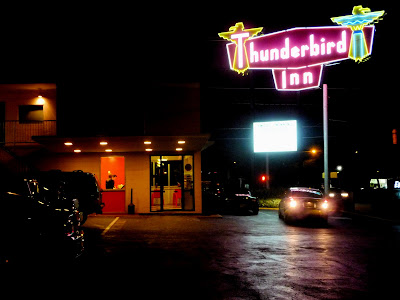


New Mexico’s cuisine is still centered around crops grown by its first Pueblo inhabitants: beans, corn, and squash, with the later addition of chilies—green or red, depending on ripeness when harvested. In keeping with regional availability, dishes use less avocado, rice and veggies than Cal-Mex and less jalapenos and cumin than Tex-Mex. Beef is big in New Mexico—cows are easier to grow than vegetables in arid conditions. In Santa Fe I ate Frito Pie, a southwestern chili con carne and Frito mashup, at a bar where I didn’t bother asking about where the beef came from.
Sometimes I tire of irritating servers and sometimes I just don’t want to draw attention to myself. When I was young and vegan I was bursting with self-righteousness but now I can’t help occasionally feeling sort of yuppie-ish and precious about my diet when I ask where the beef came from in a restaurant. It’s fun to strike up conversations about local food in Vermont, but in New Mexico I felt a bit road-weary and mostly kept to myself.
Santa Fe’s adobe architecture was totally alien to me and it was easy to see how the otherworldly landscape inspired modernist painters like O’Keeffe. I drove to Taos looking for the Earthship off-the-grid community on its outskirts but felt wary to trespass and satisfied myself with a walk over the Rio Grande Gorge Bridge and a stroll through the sleepy little hippie downtown.
Back in Santa Fe I went for an early dinner at the 315 Wine Bar. The Santa Fe Reporter’s locavore issue came out on my second day in town. Encouragingly, it focused mostly on Farmer’s Markets, farmstands, and DIY locavore stuff like seed-starting that didn’t apply to a traveler like me, with an emphasis on how local food is not a yuppie fad but a way to affect real change. I read about 315 in the dining issue from a few weeks earlier. A reviewer called the restaurant the “Chez Panisse of Santa Fe,” so I was really excited about eating there. My excitement waned a bit upon entering—the “wine bar” area was cramped and dingy and I was installed at a table right next to the neon-lit, bass-bumping kitchen’s swinging doors. I ordered the pan-fried, sage-dusted Texas quail with green beans, mashed sweet potatoes and dried cherry sauce. The dish was nicely composed, with the sides portioned generously to make the quail a meal. The tartness of the cherries offset the sweet potato and an appealing variety of color was presented on the plate, but with the inattentive service and clanging pans I had a hard time really enjoying the meal, and I pretty much ate and ran.
I left New Mexico feeling guilty about my lackluster efforts exploring the local food scene—I should have devoted extra effort in a place with such unique culinary history. There’s a lot to explore there and I’d love to return to New Mexico and elsewhere later in spring and in midsummer, when it’s cheap and easy to put together a local meal. From New Mexico I headed to Arizona and then sunny SoCal, where the farmer’s market offered a dazzling array of produce…





































